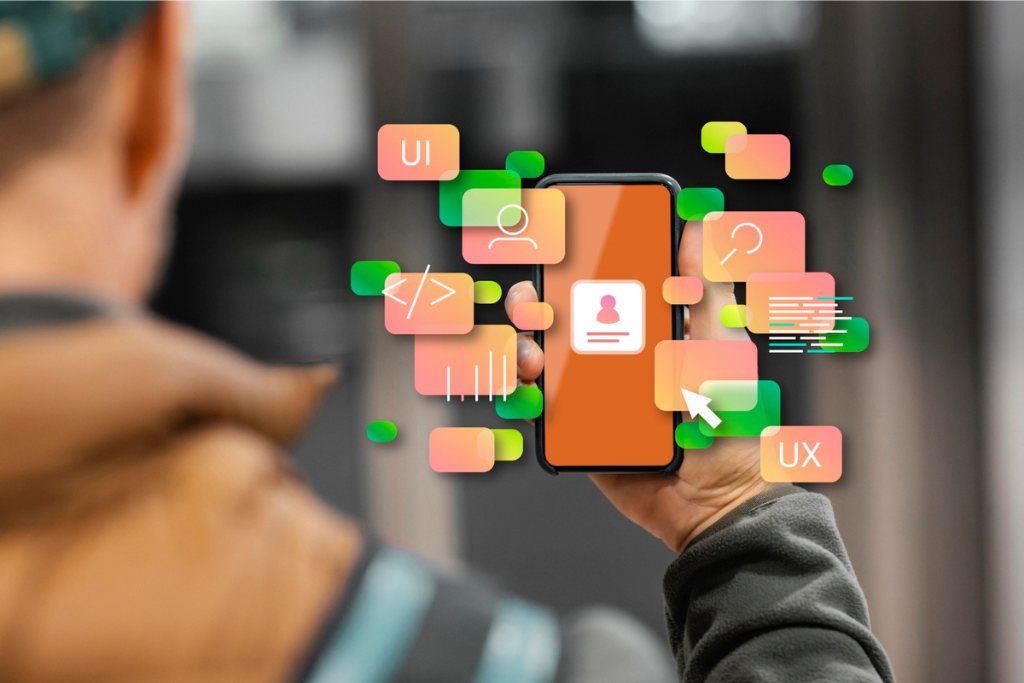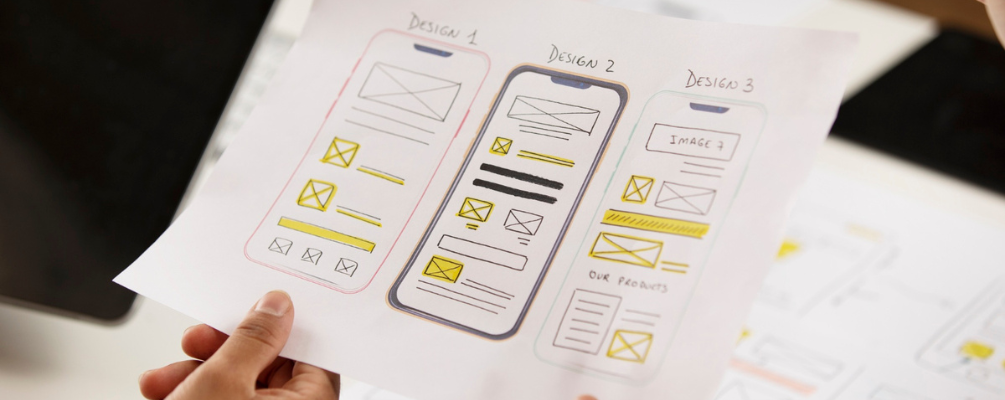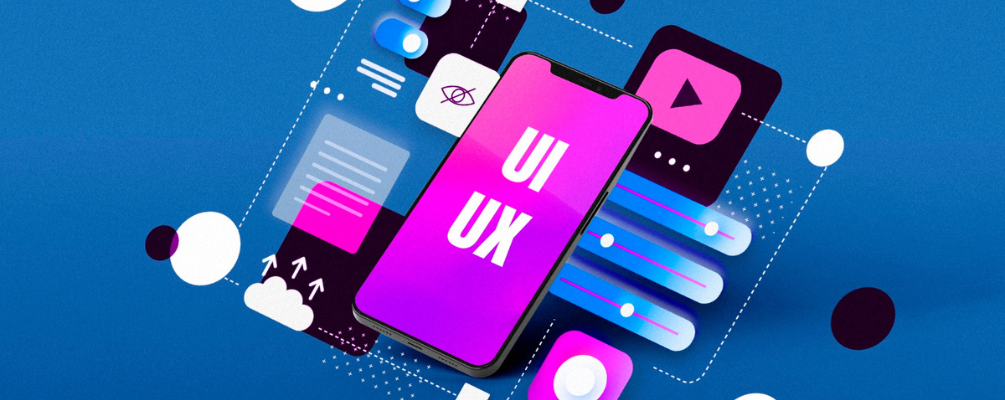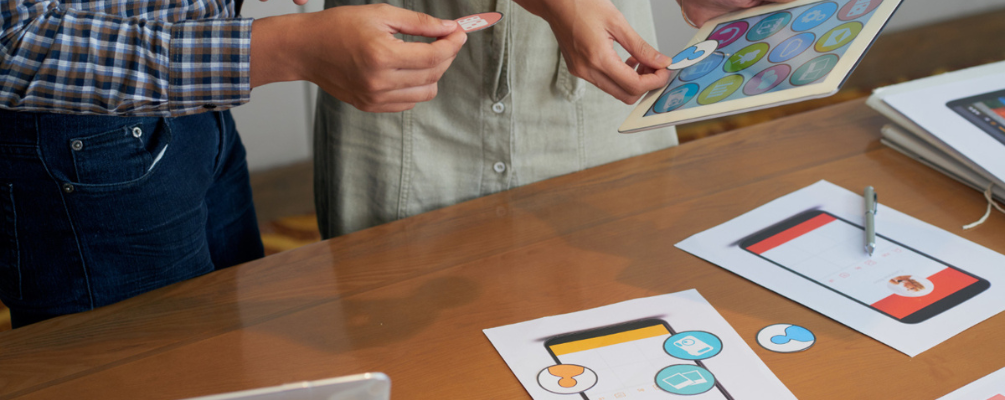> Articles > The Role of Usability Testing in UI/UX Design

The Role of Usability Testing in UI/UX Design
The primary role of usability testing in UI/UX Design is finding ways to improve your product’s design. This is done by observing real users testing your product or prototype and watch how users interact with the product, uncovering pain points such as confusing navigation.
Once a solid understanding of how real users interact with a product is gained, designers can make informed adjustments, which can lead to a more intuitive and enjoyable user experience. This core UX research method helps designers ensure their designs aren’t just aesthetically pleasing but also practical and user-friendly.
What is Usability Testing?
Usability testing in UI/UX design is a user-centered research methodology that involves observing how users interact with a product, such as a website, application, or software. Think of it like test-driving a car—except, instead of a car, you’re testing a website or app to see how people use it, their reactions, and any challenges they may encounter. By understanding how real users interact with a product, designers and developers can make informed decisions to improve the user experience.

Types of Usability Testing
Usability testing falls into the following three categories:
1. Qualitative or Quantitative
Think of it as subjectivity vs objectivity. Qualitative testing seeks to answer deeper, emotion-driven questions by exploring the “why” behind a user’s behaviors, emotions, and experiences. This is mostly done via interviews and observations.
Quantitative testing takes a more practical approach by involving measurable data such as satisfaction, task completion, error rates, etc. It analyzes this data to identify patterns, compare design performance, track usability, etc.
2. Moderated vs. Unmoderated
A moderated test involves a moderator who guides users through a predetermined set of tasks. They answer questions, ask follow-up questions, and get feedback in real time. Unmoderated usability testing gives more freedom to users. They can complete tasks independently, often remotely (though it can be in-person as well), and use usability testing tools for recording their responses and actions. It tends to result in a broader feedback perspective.
3. Remote vs. In-Person
Remote testing is conducted with users who aren’t physically present in front of a moderator or can be completely unmoderated. It’s performed using online tools, and users can participate using their own devices. It’s quite efficient because it reels in a larger, geographically diverse user pool.
In-person testing takes place in a controlled environment and involves direct interaction with the user. It tends to be more expensive and time-consuming for this reason, but it is necessary for certain products. It also gives testers a chance to observe users’ non-verbal cues to gain deeper insights.

5 Benefits of Usability Testing in UI/UX Design
1. Saves Time and Reduces Development Costs
Running a usability test early in the design process can save both time and money if issues are detected. During the pre-launch phase, fixes are easier and cheaper to make. This proactive approach reduces the chances of having to make costly repairs later on.
2. Improves Accessibility
The hallmark of a well-designed program is its accessibility to most people, no matter their physical condition. Include users with special needs during the usability testing process to get a clearer picture of what they require. This way, you build an inclusive product that promotes a culture of acceptance and accommodation online and helps meet standard accessibility compliance and regulations.
3. Improves User Satisfaction and Loyalty
Usability testing helps a product team identify and fix pain points that may be frustrating for users. Making these improvements will lead to improved user satisfaction and build a sense of loyalty for your brand.
4. Unbiased Insights
A product team may have a critical or overly accepting view of their own product, but real users provide unbiased feedback during a usability test. This allows designers to get the perspective of actual users, helping them uncover issues that may not be immediately obvious. This feedback helps improve product functionality and overall design.
5. Special Considerations
Product teams have a specific target-audience in mind, one that is most likely to engage with their product. By directly talking to these users, they can get a better understanding of what they want and don’t want in a product. This allows the team to tailor to these users’ preferences, giving them a competitive edge and developing a product that gains higher engagement rates.

How To Perform Usability Testing
Usability testing in UX design includes the following steps:
- Define your goal and target audience.
- Use a tool for UI UX usability testing that allows for continuous testing.
- Select participants from a diverse group and develop tasks for them to complete.
- Run a pilot test to observe users, noting difficulties and areas of confusion.
- Collect and analyze qualitative and quantitative feedback to identify patterns.
- Implement the changes based on the insights you gathered.
Conclusion
Usability testing is a core part of the UI/UX design process. It helps designers create products that are visually and functionally appealing. It allows the development team to get crucial information about the user’s preferences and needs, making their approach user-centric and ensuring the target audience gets the best possible product.
Frequently Asked Questions
Q1. How Can Usability Testing Benefit My Business?
Usability testing helps a team find issues within their product based on data collected from real-user testing. Addressing these issues directly increases user satisfaction and makes a better product, which often results in higher conversion rates. It also saves time and reduces costs by addressing these issues early in the development phase.
Q2. When Should I Start Usability Testing on My Product?
Ideally speaking, the sooner the better. It’s never too early to begin usability testing. However, since it’s a continuous process, no matter where you are in the development process chain, you can reap the benefits.
Q3. What Types of Usability Testing Do You Offer?
Our team offers different ways to do usability testing from moderated or unmoderated versions, remote or face-to-face testing, qualitative or quantitative and more. For more information, contact SlickDigital today.
Latest Posts
-
 10 Jun 2025 Company NewsPress Release: SlickDigital Joins Pivotly to Advance Custom App Development for AI-Driven Enterprises
10 Jun 2025 Company NewsPress Release: SlickDigital Joins Pivotly to Advance Custom App Development for AI-Driven Enterprises -
 21 Nov 2024 Data MigrationKey Data Migration Challenges and Effective Strategies to Overcome Them
21 Nov 2024 Data MigrationKey Data Migration Challenges and Effective Strategies to Overcome Them -
 21 Nov 2024 Blockchain DevelopmentHow to Choose the Right Blockchain Platform for Your Development Project?
21 Nov 2024 Blockchain DevelopmentHow to Choose the Right Blockchain Platform for Your Development Project? -
 21 Nov 2024 MVP DevelopmentHow to Validate Your Business Idea with MVP Development
21 Nov 2024 MVP DevelopmentHow to Validate Your Business Idea with MVP Development -
 19 Nov 2024 Staff AugmentationTop Benefits of IT Staff Augmentation for Growing Tech Teams
19 Nov 2024 Staff AugmentationTop Benefits of IT Staff Augmentation for Growing Tech Teams -
 19 Nov 2024 CloudHow Cloud Applications Affect the Future of Your Business
19 Nov 2024 CloudHow Cloud Applications Affect the Future of Your Business -
 18 Nov 2024 Application DevelopmentExplore the Best Tools for Effective Application Integration
18 Nov 2024 Application DevelopmentExplore the Best Tools for Effective Application Integration
